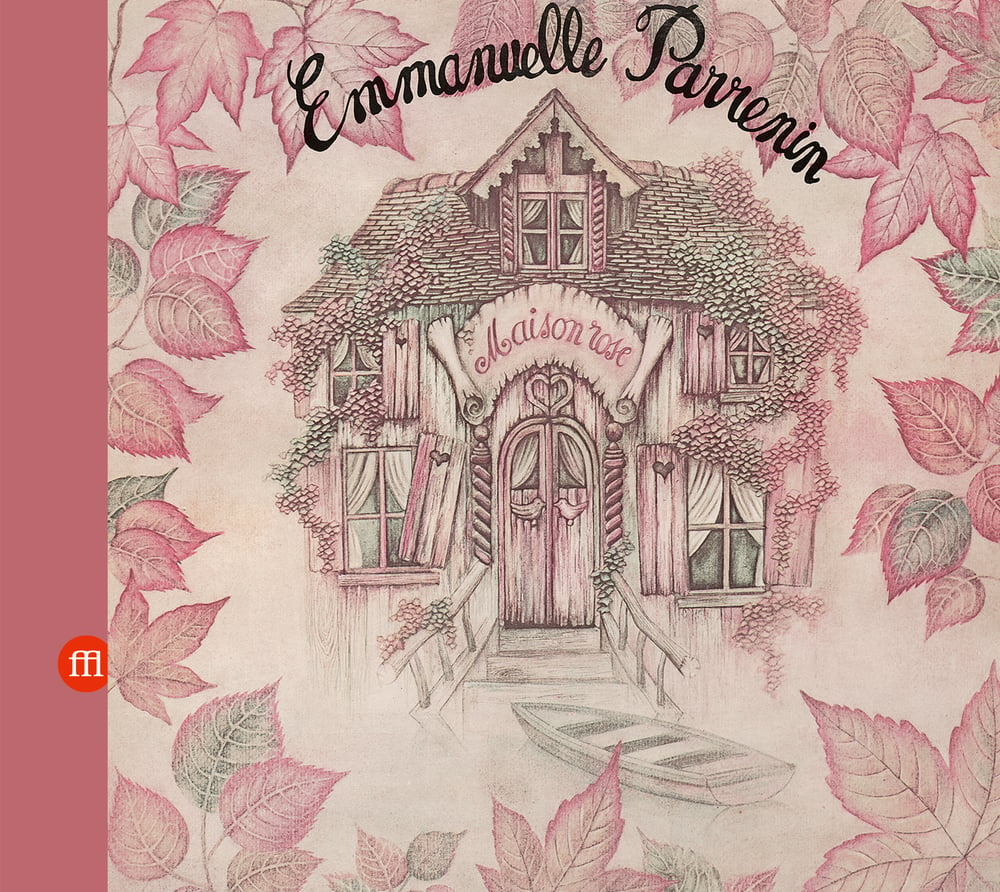Emmanuelle Parrenin - Maison Rose (Extended Edition) (FFL024CD)
12,00 €
CD reissue of the timeless 1977 French folk classic “Maison Rose”
Includes two unreleased tracks
Licensed from Emmanuelle Parrenin
An album such as this obviously owes a lot to the atmosphere in which it was recorded, which we can imagine was magical.
We know it took place in Fromentel, Normandy, in a farm converted into a studio by
the producer Jacques Denjean, known for his work with Dionne Warwick or Françoise Hardy as well as having been a member of the Double Six. It was also at
Fromentel, that Denjean would record two fantastic albums with Albert Marcoeur. When Emmanuelle Parrenin followed in his footsteps a year later she was in good company: the sound engineer at the studio was her partner and therefore uniquely capable (we imagine) of creating an adequate soundscape for her delicate universe. What is more, five years previously, Bruno Menny, the sound engineer partner, recorded his first and only album, but what an album: in electroacoustic terms we can hear things which make him appear as the spiritual son of his mentor Iannis Xenakis!
What makes Maison Rose unique is exactly this fusion between the two conceptions of Emmanuelle Parrenin and Bruno Menny, creating a perfect marriage of tradition and experimentation. The tradition comes from the songs collected by
Emmanuelle Parrenin in rural areas, in a similar vein to the work carried out by Alan Lomax and Shirley Collins. The experimentation is in the sound captured by Bruno Menny, who both arranged and recorded the album. This is not to forget those who came with their guitar (Denis Gasser), or their lyrics (no less a figure than Jean-Claude Vannier). On the one hand we have the humble and non-demonstrative singing, with melodies which remind us of songs we would sing to calm a child's nightmares, and on the other hand a pronounced rhythmic intensity at certain points, such as on "Topaze" where the drums in particular evoke the Motorik of krautrock legends Faust.
A real haven of peace, Maison Rose is enchanting with its aura of mystery and spirituality, with soft, gentle songs which seem both ancestral and futurist. Originally published by Ballon Noir in 1977, this album follows on from other folk marvels such as Le Galant Noyé from the pre-Mélusine period. On the subject of Maison Rose, if we had to risk a few comparisons we would mention Vashti Bunyan, Linda Perhacs, Joanna Newsom, Collie Ryan, Shirley Collins, Trees Community,
Sourdeline and Véronique Chalot as those which spring spontaneously to mind. But this is too reductive for the timeless singularity of Emmanuelle Parrenin: because Maison Rose was recorded in 1977, in the midst of the punk revolution.
*
Un tel album doit forcément beaucoup à l'ambiance de son enregistrement, que l'on imagine magique. On le sait avoir pris place à Frémontel, dans une ferme normande transformée en studio par le producteur Jacques Denjean, connu pour son travail aux côtés de Dionne Warwick, Françoise Hardy, ainsi que pour avoir fait partie des Double Six. Frémontel, c'est là aussi, qu'avec le même Denjean, Albert Marcoeur enregistra ses deux fantastiques premiers albums. Et Emmanuelle Parrenin, quand elle prend la suite de ce dernier un an après, s'y trouve en bonne compagnie : l'ingénieur du son associé à l'endroit est alors son amoureux, seul capable (imagine-t-on encore) de confectionner un écrin à la mesure d'un univers en apesanteur. D'ailleurs, cinq ans auparavant, Bruno Menny, l'amoureux en question, a enregistré un album, son seul et unique qui plus est, mais quel album : en matière d'électroacoustique, disons qu'il s'y entend et fait figure de digne rejeton de son mentor Xenakis !
Toute la singularité de Maison Rose réside justement dans la transcription fusionnelle de ces deux visions, celles d'Emmanuelle Parrenin et de Bruno Menny, oeuvrant au mariage réussi de la tradition et de l'expérimentation. Tradition héritée du collectage de chansons traditionnelles en zone rurale pour Emmanuelle Parrenin, dans la lignée du travail entrepris par Alan Lomax et Shirley Collins. Expérimentations sur le son pour Bruno Menny, qui arrange et enregistre. Sans oublier ceux qui prêtent ici leur guitare (Denis Gasser), là des paroles (Jean-Claude Vannier, quand même). D'un côté le chant humble et sans exhibitionnisme, sa fraîcheur désarmante, servent des mélodies du genre de celles qu'on chante aux enfants afin de chasser les cauchemars. De l'autre, certaines insistances rythmiques, sur "Topaze" par exemple, et à la batterie notamment, évoquent le motorisme kraut de Faust.
Véritable havre de paix, Maison Rose envoûte par son intimité auréolée de mystère et de spiritualité, faite de chansons douces à la beauté fragile, à la fois ancestrales et futuristes. Originellement édité par Ballon Noir en 1977, cet album fait suite à quelques merveilles folk dont le pré-Mélusine Le Galant noyé. À propos de Maison Rose toujours, si l'on doit à tout prix se risquer sur le terrain des analogies, l'on énumérera Vashti Bunyan, Linda Perhacs, Joanna Newsom, Collie Ryan, Shirley Collins, Trees Community, Sourdeline et Véronique Chalot comme venant à l'esprit spontanément. Mais c'est encore trop peu dire la singularité hors du temps / hors des modes de l'univers d'Emmanuelle Parrenin : car Maison Rose a été réalisé en 1977, en pleine effervescence punk.
.
©2022 SouffleContinu Records
-
If you want registered shipping,
please contact us at:
[email protected]
We can’t guarantee delivery or refund without registered shipping. Sorry about that.


